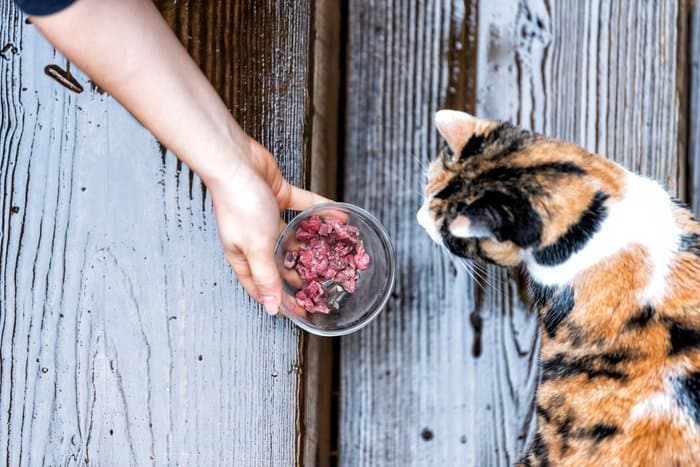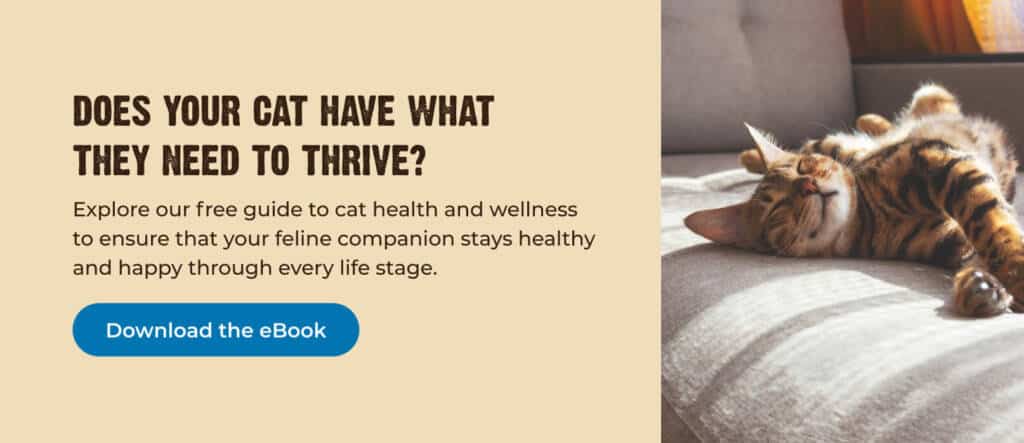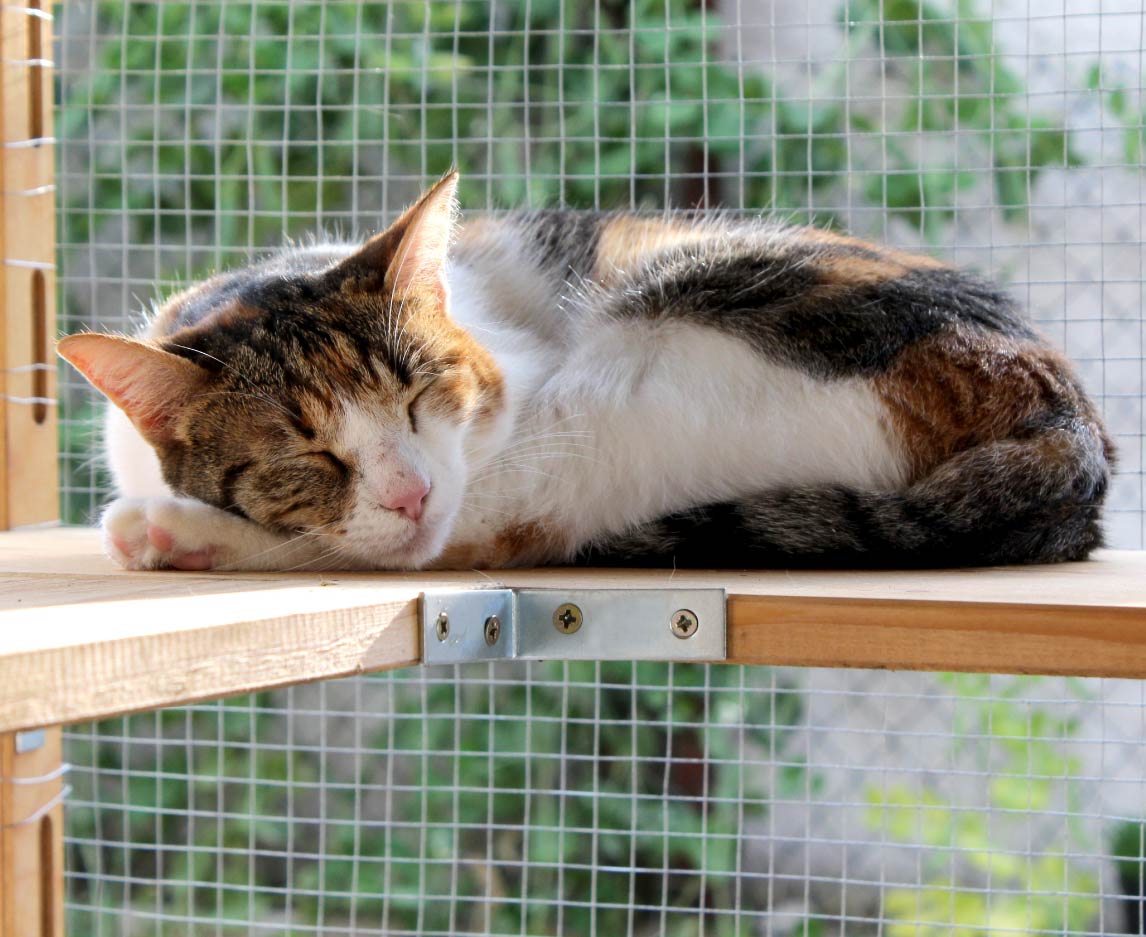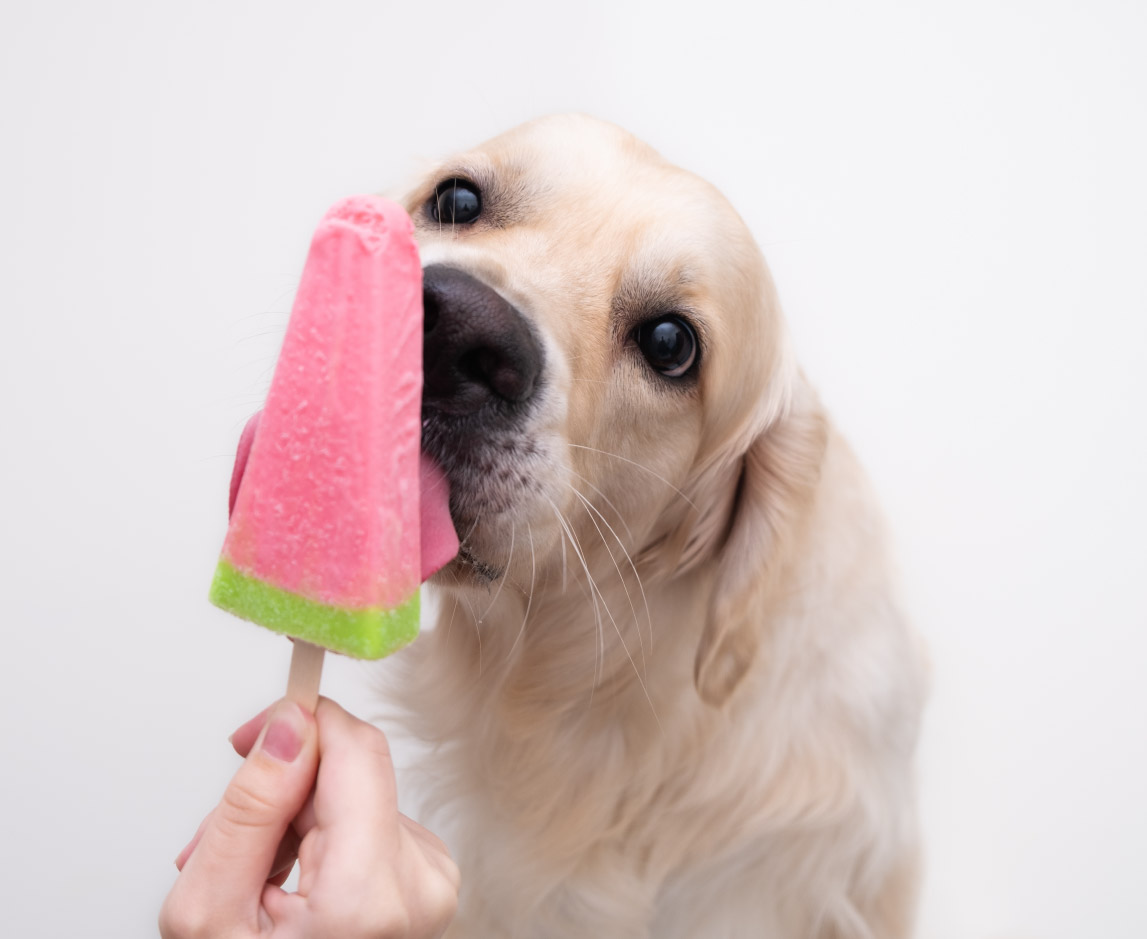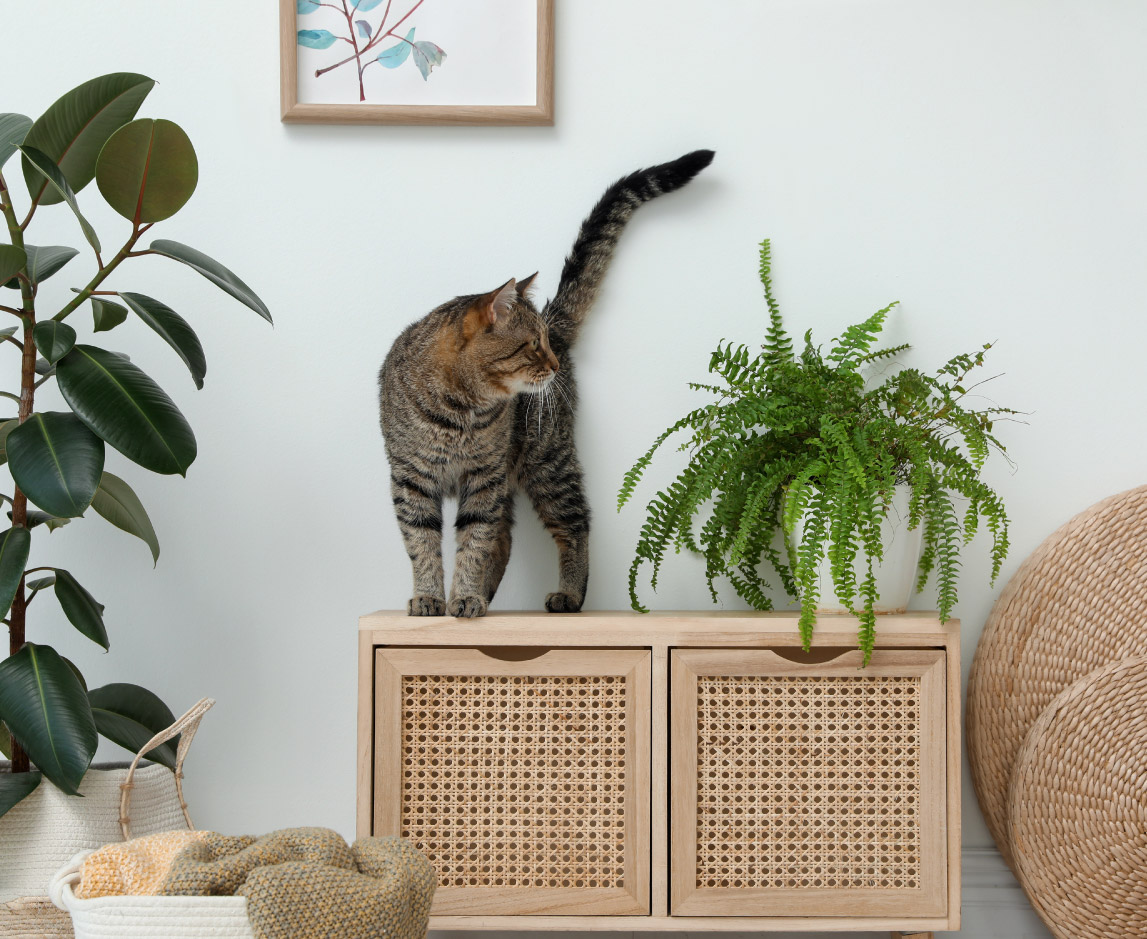Whether you’re a master chef or a cooking novice, you can successfully prepare homemade food that your cat will love. All it takes is an understanding of the process and the necessary ingredients to create complete and balanced meals.
Read on for a close look at how to properly make your own cat food.
Raw vs. Cooked Homemade Cat Food
You can choose to prepare raw cat food, cooked cat food or a balance of the two. Each option will require the following ingredients:
- Meat
- Organs
- Bone
- Fat
- Egg Yolks
- Water
- Supplements
To be considered truly raw, the meat is not processed using any heat. Cooking with heat can cause the meat to lose nutrients, which is why raw feeding is considered to be very beneficial. However, if you are concerned about feeding your cat uncooked meat because of the potential for bacteria, Lisa A. Pierson, DVM and owner of CatInfo.org advises that you can also partially cook the meat.
The type and source of the meat may also influence your decision. Pierson chooses to feed rabbit 100% raw, but partially bakes chicken and turkey whole thighs. “I never feed poultry from any source in the raw form since it is more apt to be contaminated with harmful bacteria,” she writes. If you purchase pre-ground poultry, it should always be fully cooked.
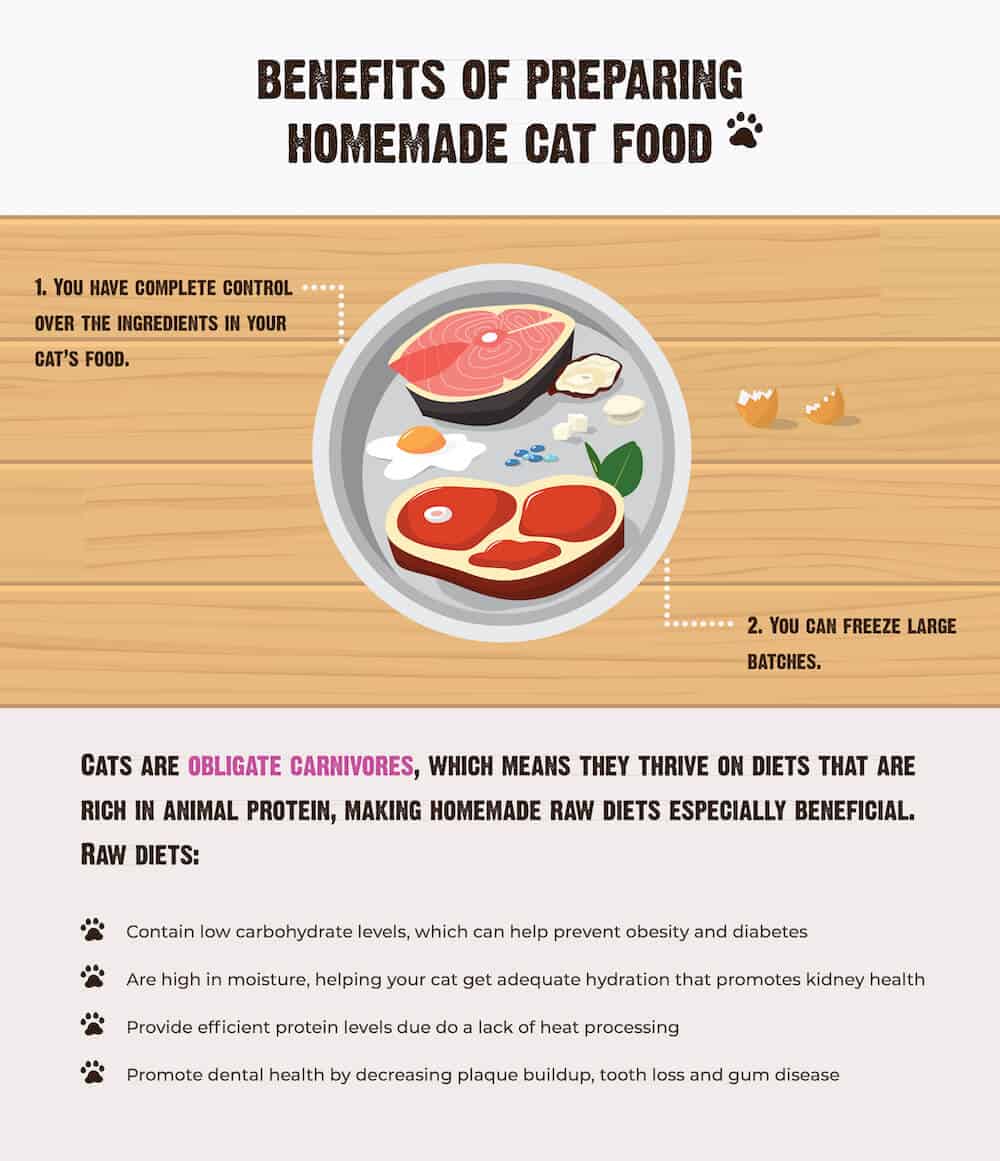
Benefits of Preparing Homemade Cat Food
Homemade cat food offers several notable benefits:
- You have complete control over the ingredients in your cat’s food. Some commercially available cat food brands include ingredients that aren’t necessary for your cat, such as vegetables, fruits or added grains. By making your own cat food, you can prioritize the meat, vitamins and minerals that your cat needs.
- You can freeze large batches. Pierson recommends preparing enough food for three to four months. However, be sure not to keep homemade cat food in the freezer longer than four months since nutrients can degrade over time.
Cats are obligate carnivores, which means they thrive on diets that are rich in animal protein, making homemade raw diets especially beneficial. Raw diets:
- Contain low carbohydrate levels, which can help prevent obesity and diabetes
- Are high in moisture, helping your cat get adequate hydration that promotes kidney health
- Provide efficient protein levels due do a lack of heat processing
- Promote dental health by decreasing plaque buildup, tooth loss and gum disease
What Nutrients Do Cats Need?
When it comes to homemade cat food, preparing complete and balanced recipes is an absolute must. In the wild, cats can get all of the necessary nutrients by feasting on the entirety of their prey, but modern cats need supplemental vitamins and minerals.
Below is a list of the supplements needed for homemade cat food. You can typically find these at specialty grocery stores, health food stores or online retailers. The supplements are the same that are intended for humans, only the amounts will vary.
Feline-Nutrition advises purchasing these supplements:
- Taurine
- Wild Salmon Oil or Wild Caught Small Fish Oil
- Vitamin E
- Vitamin B-Complex
- Lite Salt Containing Iodine
- Psyllium Husk Powder
Cats have evolved to get their hydration from the prey they eat, which is why they don’t have a natural thirst drive like dogs. Raw meat that is used in many homemade recipes provides an excellent source of hydration, but you should also have fresh water available at all times.
You’ll also want to make sure to get the freshest, highest quality meat possible for your homemade cat food recipes. Don’t remove the fat from the meat; it’s important for nutrient utilization, cell integrity and metabolic regulation.
Bones & Calcium
When preparing homemade cat food, what do you do with the bones?
Pierson explains on CatInfo.org that cats cannot live on meat alone — they also need calcium. Homemade cat food then needs to include a proper calcium-to-phosphorus ratio. If cats were to eat prey in the wild, they would be consuming a good balance of calcium (from the bones) and phosphorous (from the meat).
The bones should be ground with the meat, or you should add another source of calcium and supplements if you’re only using meat. It’s crucial to include the right amount of bone because too much can cause constipation or an obstruction to the urethra. “I suggest just using poultry thighs which will lower the bone content of the food since the thigh is the meatiest part of a bird’s body that contains a bone,” says Pierson.
Equipment & Tools for Preparing Homemade Cat Food
There are several essential tools you’ll need before you can start preparing homemade cat food. Here’s a helpful list from Feline-Nutrition:
- Meat Grinder (one that can handle bones)
- Ear Plugs (in case your grinder is too loud)
- Sharp Knives
- Meat Cleaver
- Mixing Bowls
- Poultry Shears
- Kitchen Scale
- Large Cutting Boards
- Freezer Space
- Latex or Nitrile Gloves
- Newspaper or Plastic Covers for Your Work Area
- Freezable Plastic or Glass Containers, or Ziploc Freezer Bags
The Cost of Homemade Cat Food
When you’re determining how much a homemade diet will cost, there are a ton of factors to consider.
Depending on what you already have in stock in your kitchen, you may need to buy some of the equipment and tools we listed above. However, most of these items will be one-time expenses.
The meat is one area where there will be a lot of variabilities. Cost will depend on:
- The Type of Meat: For example, chicken is often less expensive than rabbit, and organic meat will have a higher price tag than non-organic.
- Where the Meat is From: A local farm may offer better prices than a specialty store.
- How Much Meat You Need: Consider the number of cats you have and their appetites. This will tell you how much you need to buy and how often.
Don’t forget the supplements. These may be expensive at first, but you can get a lot of use out of them, and they are invaluable to your cat’s health. You’ll also need ingredients like eggs and salt that can be purchased at your local grocery store.
Safety Concerns & Tips
Homemade raw diets can potentially pose health and safety issues if not prepared correctly. Here are a few safety tips to keep top of mind:
- Pre-ground meat must be thoroughly cooked because it’s possible that surface bacteria can be ground into the meat.
- Always clean and disinfect all food preparation areas.
- Wash your hands with soap and water after handling ingredients.
- Deep clean all tools and equipment that were used to prepare the homemade cat food.
- Always be aware of the size of the bone pieces in the food. Large pieces can get stuck in your cat’s mouth or could cause them to choke.
- Before switching to a homemade diet, take your cat to the vet for a dental exam. Healthy teeth are essential for chewing the chunks of meat that are present in homemade diets.
- Make sure that the recipes you are preparing are complete and balanced. Feeding your cat unbalanced meals can cause health risks due to a lack of essential nutrients.
Homemade Cat Food Recipes
To help you start your transition to homemade cat food, take a look at this recipe from Lisa A. Pierson, DVM.
Note: Always consult your vet before making any changes to your cat’s diet. Your vet can also help you create a homemade food plan that’s tailored to your cat’s particular health needs.
- 3 pounds of whole fowl or rabbit, including bones, organs and skin
- 1 cup water
- 2 eggs (use raw yolks and lightly cook the whites)
- 2000 mg wild salmon oil
- 400 IU vitamin E (powdered E in capsule form works)
- 100 mg vitamin B-complex (start with a smaller amount when beginning a homemade cat food diet as the vitamin has a strong odor)
- 2000 mg taurine, powdered
- ¾ tsp lite salt with iodine (when using chicken parts)
- Liver (add 4 oz if the meat you are using does not include organs)
- Psyllium (add when first introducing a homemade or raw food diet to your cat)
What Do Vets Have to Say?
Homemade cat food can be a healthy alternative to store-bought options, one that more closely mimics a cat’s natural diet — but what do the experts have to say about it?
Karen Becker, DVM, author, and pet nutrition educator and formulator, is in favor of homemade diets, provided they supply the right combination of essential nutrients. Says Becker:
“As an integrative wellness veterinarian who understands the vital connection between nutrition and health, I applaud all pet parents who make the commitment to prepare and feed only a homemade diet to their pets. But here’s the rub — if you’re going the homemade route, you must do it right. And by right, I mean balanced. A growing problem in my practice is pets with compromised health as the result of being fed an unbalanced homemade diet.”
Jennifer Coates, a DVM with over 25 years of experience in veterinary medicine and animal welfare, seconds Becker’s statement and advises pet parents to be judicious about which homemade cat food recipes they follow.
“Unfortunately, many recipes for homemade cat foods contain too little or too much of one or more important nutrients,” says Coates, citing a 2019 study of home-prepared diets for cats.
When looking for homemade cat food recipes, Coates encourages pet parents to look for those provided by board-certified veterinary nutritionists and to follow them to the letter. “Research has shown that, with time, many pet parents make substitutions in the diet and/or completely stop including vital ingredients, like vitamin and mineral supplements,” she adds.
“The best pet food recipes will include very precise amounts of specific ingredients, and will include added sources of vitamins and minerals such as calcium, B vitamins, iron, zinc, and essential fatty acids,” says Cailin R. Heinze, a board-certified veterinary nutritionist and Chief Academic Officer of the Mark Morris Institute. “While a ‘whole foods’ approach where every nutrient comes from food, not supplements, is appealing, it is nearly impossible to meet all of your pet’s nutrient needs without adding concentrated supplements.”
Heinze cautions pet parents against using vitamin and mineral supplements marketed for pets, instead recommending that they seek out specific veterinary supplements or multiple human supplements. Like Coates, Heinze emphasizes the importance of consulting a board-certified veterinary nutritionist to identify the right balance of ingredients and supplements for your pet.
Finally, for pet parents looking to make the switch from store-bought to homemade cat food, it’s important to be realistic.
“If you’re interested in feeding your cats home-prepared food, you have to go into this extremely carefully and you have to spend a lot of time learning,” says Andrea Tasi, a Washington, DC area vet who specializes in feline healthcare and feeds her own cats a homemade diet. “This is not easy. For people who want to feed their cats less-processed foods, I don’t think they should be making their own food [as the] first step.”
Instead, Tasi recommends that pet parents interested in making the transition start by researching commercial pet food brands that offer “pre-pasteurized, balanced, frozen, raw food diets.”
Frequently Asked Questions
Q: How can I transition my cat to a homemade raw diet?
A: Slow, phased transitions tend to work best with cats, since they are notoriously picky with their food. The most important thing is to be patient. You can start the transition from less processed food by phasing in small amounts of homemade raw food and slowly increasing the amount until they are completely transitioned. You can also review this transitioning guide from the Feline Nutrition Foundation for more tips.
Q: Are there alternatives to homemade raw diets that provide similar benefits?
A: There are commercially prepared raw meals that are available in pet stores. Freeze-dried and dehydrated options offer many of the same benefits as raw diets because they either completely avoid heat-processed ingredients or contain ingredients that have gone through very minimal heat processing.
Q: How can I make sure my homemade cat food is complete and balanced?
A: It’s best to follow recipes to a T to ensure that you’re including the right amount of ingredients. You can find recipes from CatInfo, Feline-Nutrition and CatNutriton. When in doubt, consult with a veterinary nutritionist.
RAWZ is an advocate for the benefits of feeding homemade raw diets. However, we also understand that raw feeding may not be right for everyone. That’s why we’ve spent years working with leading veterinary nutritionists to develop “the next best thing to feeding raw.” Our minimally processed cat food can be offered as your cat’s main source of food or as a supplement to a homemade diet, all in the convenience of a dry food package or wet food cans.


